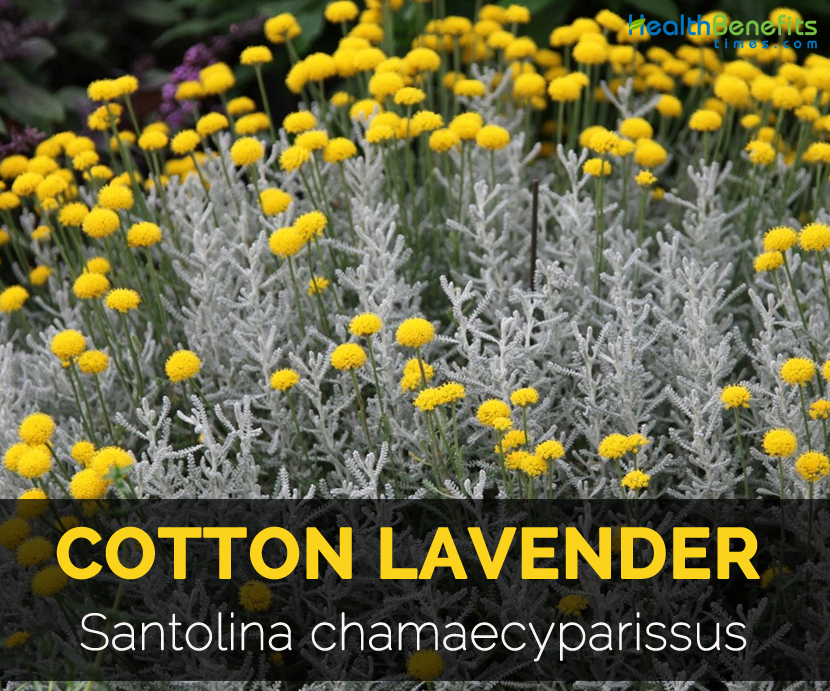| Cotton Lavender Quick Facts | |
|---|---|
| Name: | Cotton Lavender |
| Scientific Name: | Santolina chamaecyparissus |
| Origin | Mediterranean area (southern Europe and northern Africa) |
Health Benefits of Cotton Lavender
- Treats indigestion
Tea prepared from Cotton Lavender is helpful for those experiencing indigestion. The intake of herbal tea promotes the production of digestive juices and enzymes and provides relief from upset stomach effectively.
- Alleviate jaundice
Jaundice refers to yellowing of skin as well as conjunctiva of eyes-the mucous membrane which covers peepers. It is a common symptom associated to liver. Traditional healers use Cotton Lavender for jaundice.
- Ease muscle spasms
Women are bothered by PMS few days before their monthly period arrives. Add Cotton Lavender to manage one of the pesky nuisances that PMS brings i.e. muscle spasms. It also helps with bloating.
- Relief from joint inflammation
Apply the pounded aerial parts of Cotton Lavender on joints to ease pain and inflammation. It is also effective for dealing with muscles which feels sore and achy.
- Prevent insect bites
The pounded aerial parts of Cotton Lavender acts as insect repellant due to the strong odor that they emit when pounded.
Traditional uses
- Use it internally as a vermifuge or treating poor indigestion and menstrual problems.
- Apply finely grounded to the insect stings or bites to ease pain.
- Apply it to the wounds to hasten healing process by promoting the formation of scar tissue.
- It lowers inflammation and also promotes digestion.
- It stimulates menstrual problems and also expels intestinal parasites.
- Stimulates uterus (menstrual problems), liver (jaundice), expel intestinal parasites
- Use it externally as a wash for stings, skin inflammation, minor wounds, scab and ringworm.
- Rub the herb for rheumatism and painful joints.
Culinary uses
- Use the aromatic leaves for sauces, broths and grain dishes.
- Use it to flavor meat and fish dishes, soups and sauces.
Precautions
- The leaves cause a severe rash on sensitive skins.
- Avoid the use by children and pregnant women.
- Lavender cotton is toxic in cases of pregnancy and suckling, might result abortion.
References:
https://www.itis.gov/servlet/SingleRpt/SingleRpt?search_topic=TSN&search_value=38354#null
https://pfaf.org/user/plant.aspx?latinname=Santolina+chamaecyparissus
https://en.wikipedia.org/wiki/Santolina_chamaecyparissus
http://www.naturalmedicinalherbs.net/herbs/s/santolina-chamaecyparissus=cotton-lavender.php
http://www.herbgarden.co.za/mountainherb/herbinfo.php?id=54
https://www.botanical-online.com/en/medicinal-plants/lavender-cotton-properties
https://www.healthybuilderz.com/medicinal-benefits-lavender-cotton/
Comments
comments
